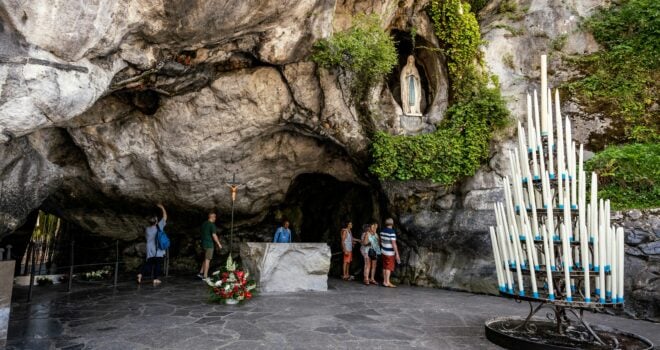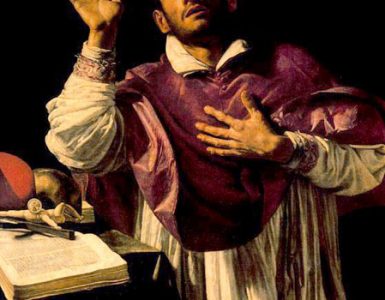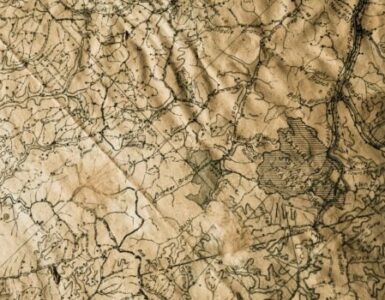As Catholics across the U.S. are preparing to vote, many parish priests are reminding their parishioners of their social, civic, and religious responsibilities, urging voters to keep the teachings of the Church foremost in their minds as they mark their ballot.
This year’s election has stirred up divisions within communities and families. Pundits claim that the country has never been more divided than it is as it approaches November 5th. While the current situation might be made more intense by partisan 24-hour news channels and “doom scrolling” social media, history reveals that the U.S. has frequently found itself in times of severe division and conflict.
Colonial America was a hotbed of conflicting ideologies and repressive English rule. These colonies most often carried over the anti-Catholic penal laws that had been so devastating to the Church in the United Kingdom. As one example, each year on November 5th, colonialists celebrated “Pope’s Day,” a wild night of revelry that included parades, anti-Catholic slogans, and the burning of effigies of the Pope.
A rare exception to this discrimination and the criminalization of Catholicism was the founding of the colony of Maryland. Catholicism flourished in the early years of the colony, and the 1649 Toleration Act established freedom of religion. Although the act was overthrown in the ripple effects of 1688’s Glorious Revolution, the Church had established a foothold in what would become the United States.
Although the sole Catholic of the 56 signatories of the Declaration of Independence, Maryland’s Charles Carroll signed in hope of “…not only our independence from England; but the toleration of all sects professing the Christian religion, and communicating to them all equal rights.”
Charles Carroll’s cousin, John, also played a significant role in the formation of the United States. As the first U.S. Bishop of Baltimore, the only diocese in the new nation, John Carroll was instrumental in fostering the faith. He was also essential to the struggle for the Bill of Rights and its religious protection guaranteed by the 1st Amendment. Archbishop Carroll saw a glorious future for the country if it would seek to follow the will of God. He shouldered the role of not only ministering to the individual soul but to the growing nation as well. There was and would be much to divide Americans, but faith and brotherhood could stand in opposition and strengthen unity.
In his 1791 prayer for the government of the United States, Carroll spoke of his hope that the president, Congress, state governments, and citizens of the U.S. would prosper by aligning themselves with Jesus Christ. He prayed that the president would conduct their administration in “righteousness” and faithfully execute laws in “justice and mercy.” As much as its 18th century language dates the prayer, its plea for spiritual wisdom still rings true 225 years later.
Carroll, who had a powerful devotion to Our Lady, sensed that the country needed divine protection and, in 1792, placed the Baltimore Diocese under the protection of the Virgin Immaculate. Since Baltimore was the only U.S. diocese at that time, Carroll’s proclamation meant that the country and the entirety of the U.S. Church were entrusted to Immaculate Mary.
In the first ever U.S. pastoral letter, Carroll wrote that he hoped fellow Catholics would:
…join a fervent and well-regulated devotion to the Holy Mother of our Lord and Savior Jesus Christ; that you will place great confidence in Her intercession; and have recourse to Her in all your necessities. Having chosen Her the special patroness of this Diocese, you are placed, of course, under Her powerful protection; and it becomes your duty to be careful to deserve its continuance by a zealous imitation of Her virtues, and reliance on Her motherly superintendence.
As the young nation expanded, and First Amendment protections allowed the Church to prosper, Catholicism’s presence expanded in the nation. By 1846, as the divisions that would spark a civil war divided the nation, there were 23 bishops in the country. In that year at the Sixth Provincial Council at Baltimore, the U.S. Bishops re-affirmed Carroll’s consecration of the U.S. to the Virgin Mary. At that Council, they passed a decree stating: “With enthusiastic acclaim and with unanimous approval and consent, the Fathers have chosen the Blessed Virgin Mary, conceived without sin, as the Patroness of the United States of America.…” This decree was approved by the Holy See in 1847. In 1854, Pope Pious declared Our Lady’s Immaculate Conception as dogma in the Church.
By selecting Immaculate Mary as the patroness of the US, the Bishops looked beyond the things that divided the country. They called on the U.S. to focus on the Virgin’s intercessory role in leading us to Jesus. They urged the young country to focus on matters of the soul and less on earthly concerns, political machinations, and questions of temporal power. In a time of division and intense debate about the direction of the country, the Church declared that solutions would not be found in partisan politics but in the love and protection of Our Lady of the Immaculate Conception.
In the present political struggles, the U.S. Conference of Catholic Bishops provides spiritual guidance for Catholic voters. Pope Francis has stated:
Politics, according to the Social Doctrine of the Church, is one of the highest forms of charity, because it serves the common good. I cannot wash my hands, eh? We all have to give something! A good Catholic meddles in politics, offering the best of himself, so that those who govern can govern.
Remembering the country’s consecration to Mary and the declaration of the Immaculate Virgin as Patroness of the U.S.A. should be significant to Catholic voters as they enter the polls. Prayer to the nation’s patroness can help provide clarity and peace. Prayer works beyond the divisions of social media and partisan journalism to lead the faithful to thoughtful decisions about their nation’s future.
Let is turn to our Patroness in the uncertainty of this election cycle, appealing to the Immaculate Virgin to lead us through and protect us in troubled times.
Author’s Note: We are inviting American Catholics to pray the Rosary on the Rosario app with the invitation code PRAYFORAMERICA. Upon entering the code, you say a decade in a group of 5 people, who together say a complete Rosary. This group is attached to the Pray for America community, where all Rosaries are counted and can be shared!
Photo by Nick Castelli on Unsplash












